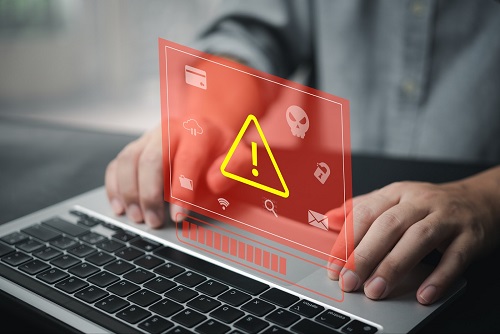The Five Stages of Vulnerability Management

Businesses have a duty to protect their data and systems from cyber security threats. This is where vulnerability management processes come in. These processes are aimed at the early detection of risks and the fortification of systems.
Of course, regardless of how much effort businesses put into vulnerability management practices, they can’t completely eliminate risks. This is because some risks aren’t from outside threats. They emanate from errors within the code itself, and unless a business is willing to devote a large amount of financial and human resources, these risks will always be there.
Knowing that threats to a business’s system are sure and only require time to manifest, businesses should follow the steps required to identify, manage and remediate cyber security risks.
This article highlights the five stages of vulnerability management and how you can use them to identify, manage and resolve risks to your system’s security.
The five stages of vulnerability management include the following:
- Assessment;
- Prioritising and Evaluating Vulnerabilities;
- Action / Remediating Vulnerabilities;
- Reassess Vulnerabilities;
- Document Vulnerabilities.
Assessment
The assessment stage of vulnerability management for businesses is focused on assessing the systems to identify and classify vulnerabilities. The process of scouring the organisation’s systems for vulnerabilities is known as vulnerability scanning, and it is a primary part of penetration testing. Penetration testing is an ethical hacking method used to test a system’s integrity and point out vulnerabilities.
The objective for using this process is to search for, identify, and inventory all vulnerabilities in the organisation’s network. Vulnerability scanning should be done thoroughly, leaving no asset out, including switches, printers, and containers.
At the end of the vulnerability scanning stage, the organisation should be able to determine a few things about their network:
- An inventory of all systems and end-points;
- A report showing all vulnerabilities in the organisation’s network;
- A report on which systems are adequately protected, those that are unprotected, and ways to access system end-points.
At the end of the vulnerability management, all system vulnerabilities should have been identified and documented.
Prioritising and Evaluating Vulnerabilities
The next stage is the evaluation and prioritisation stage of vulnerability management. Now that you have a report on all the vulnerabilities in the organisation’s system, it’s time to rank them from most important to least.
Organisations use the common vulnerability scoring system (CVSS) to rank all vulnerabilities discovered in stage one. Each vulnerability is assigned a score according to its risk level. The higher the CVSS score, the higher the risk.
The reason for evaluating vulnerabilities is to focus the core vulnerability management efforts on the risks that pose immediate threats to the organisation. This is why assessing the risk levels well is important to ensure no potential messy risk goes undetected.
Some businesses insure against this mistake by using cyber security professionals to determine the ranking and impact of risk.
Action / Remediating Vulnerabilities
Now that the organisation’s vulnerabilities have been discovered and ranked based on risk level, it’s time to remediate. There are several strategies implemented in this stage and they are either long-term or short-term fixes.
One of them is Patching. Patching is one of the commonest remediation methods to use because it solves a large number of all vulnerabilities found in software. As a result, most organisations need patch management software that addresses these cyber security breach risks.
Another strategy is acceptance. It’s an ironic strategy because it involves no action. The acceptance strategy is mostly used to address vulnerabilities that are low-risk and high-cost to fix. Rather than spend all that money when the risk value is so low, the vulnerability is left to stay.
Reassess Vulnerabilities
After implementing a remediation method, organisations must reassess the vulnerabilities to check if any changes have occurred. In essence, this stage is to verify the efficacy of the remediation strategies employed above.
It could be done through penetration testing, through vulnerability management tools, or by engaging the services of a cyber security analyst. The results of this stage should be recorded in a report and kept for future reference.
Document Vulnerabilities
The last stage of vulnerability management is the document and report stage. At this stage, the actual identification and remediation process has been completed. However, documentation is essential for improvement and organisations should ensure they report the vulnerability management process.
These reports aren’t just kept for reference sakes, they’re are kept to promote accountability and serve as a precedent for future vulnerability management processes.
Conclusion
Vulnerability management is crucial to the protection and safety of any organisation from cyber security attacks. As an organisation having cyber security experts look over your networks and systems, following the five standard steps above will keep your data safe.





